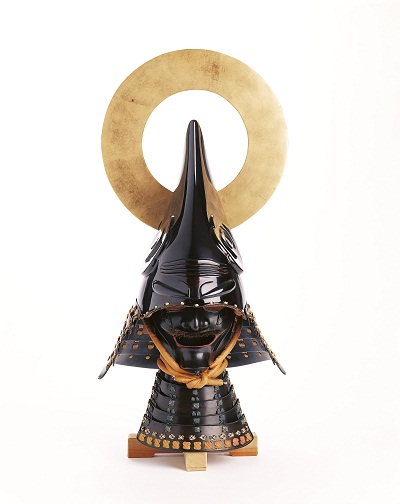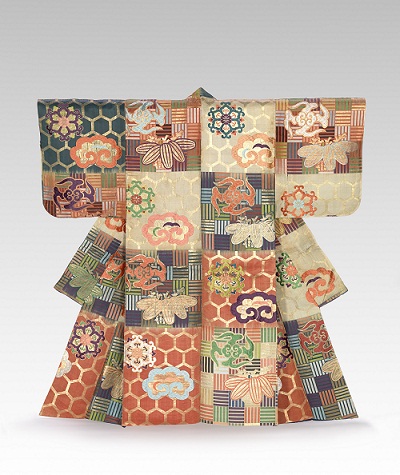2 Oct 2012
From October 5th, the most important Japanese art collection in Australia will be on display at NGV’s newly created Japanese Gallery.
The NGV has assembled the largest, oldest and most diverse collection of Japanese art in the country and many pieces are shown for the first time. The new gallery has been carefully designed to the capture the beauty, serenity and spirituality of Japanese culture.
The NGV has had a long-standing cultural connection to Japan throughout its 150 year history with its first Japanese items acquired in the 1880’s, before Australian Federation. The creation of a gallery dedicated solely to Japanese art shows NGV’s interest in Japanese culture.
For the last year, the Asian galleries on the second floor has been closed for renovation. New galleries have been constructed and devoted to the artwork of China, Japan and South & Southeast Asia.
Planning began more than four years ago coinciding with a large donation from a well-known philanthropist, and lover of Japanese art, Pauline Gandel. Other generous benefactors include Allan and Maria Myers, Baillieu and Sarah Myer, Jason Yeap and Min Lee Wong:
Pauline Gandel has assembled a major lacquer ware collection from which highlights have been selected for display in the new gallery.

JAPANESE
Samurai Helmet (Kabuto)
Edo period, 18th century, Japan
lacquer on metal (shikki)
77.5 x 34.0 cm (overall)
Collection of Pauline Gandel, Melbourne
Photo: Earl Carter
The curator responsible for the Japanese new gallery, Wayne Crothers, joined NGV’s team of Asian art curators a few years ago. Wayne lived in Japan for over twenty years, working there as an academic which has given him an appreciation of the spiritual and cultural layers that underpin the beauty of Japanese art.
Upon taking up the position at the NGV, Wayne’s first job was to review the existing collection to establish a plan for its future direction. His connection with colleagues in Japan has been important in acquiring new pieces, a process that can take up to two years for each item.
How does Wayne think visitors should approach the exhibition?

The gallery includes a number of Japanese architectural features such as tatami matted area to view scrolls, a coffered ceiling to allow the installation of large artworks and shoji lattice screens designed to create a uniquely Japanese ambiance.
Entering the Japanese gallery, the visitor will see a stunning samurai helmet, part of the Pauline Gandel collection. A section of Buddhist art is followed by historic textiles, porcelain hanging scrolls, folding screens and then tea ceremony ware. ‘This section will display tea utenciles in there correct context allowing people to understand how they would have been arranged and used from the 16th century to the present day’ says Wayne.
Visitors will find the following featured pieces in the collection: several 12th century Buddhist sculptures, large scale mandala, ancient negoro lacquer ware, exquisite maki-e lacquer ware, Noh theatre robes and masks, rare works by the eccentric Kyoto painters, fine porcelain, folding screens, tea utencils, wood block prints from the golden age of Ukiyo-e and contemporary ceramic works.
It is a diverse exhibition that will appeal to many.
Even young devotees of manga, can encounter “whimsical drawings” of everyday life in early Japan by the great Japanese artist, Katsushika Hokusai.
Wayne explains that this famous artist coined the term “manga” and his drawings are the forerunners to the modern art form that has captured the imagination of a younger generation.
Japanese art is based on both its indigenous Shinto religion and introduced philosophies from the Asian mainland.

JAPANESE
Noh theatre robe, Atsuita (Nōshōzoku Atsuita)
Edo period, late 18th century–early 19th century, Japan
silk, gilt paper, silk thread
173.0cm (center back); 41.0 cm (sleeve length)
National Gallery of Victoria, Melbourne
Felton Bequest, 2012
Being an group of islands affords Japan an independence. It is this isolation that experts like Wayne believe has contributed to the innovative and distinctive style of Japanese art and culture.
A curator’s job does not end at the opening of the exhibition. Many items such as lacquer ware and prints are delicate and light sensitive, and can only be shown for four months at a time to preserve their beauty and value. The new Japanese gallery is a permanent exhibition but due to these strict conservation issues, the collection will be refreshed with new items. Items on display are rotated on a regular basis.
However, this means lovers of Japanese art will be treated to a different experience each time they visit.
The NGV has a reputation for presenting an active public programs schedule. A number public events will be held to coincide with the opening.
The NGV also takes its educational role seriously. There will be a series of lectures on Japanese art.
The NGV has sent a comprehensive Asian art resource kit and teaching guide to every school principal in Victoria.
For many years, the NGV, benefactors and curators have worked together to bring an authentic Japanese experience to Melbourne.
The new exhibition promises to be much more than a display of Japanese art. It is a wonderful opportunity to become better acquainted with Japanese culture.
Story: Peter Dewar
Learning about Japanese Art
Education Kit:
NGV have sent all Victorian Schools a comprehensive education kit on Asian art, which includes a teacher’s guide and DVD. It is a well presented source of information and covers Japanese art.
On-line:
http://www.ngv.vic.gov.au/asianart/regions-japan.html
National Gallery of Victoria
The Japanese Gallery (The Pauline Gandel Gallery of Japanese Art)
Public Opening: October 5, 2012




